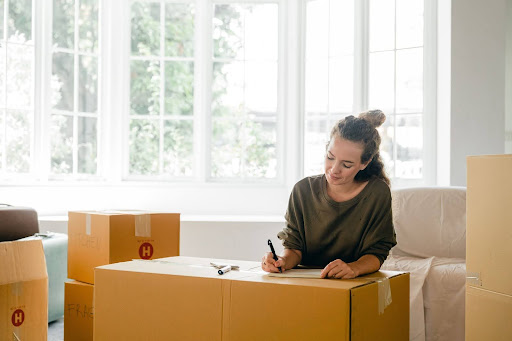
Image via Pexels
Moving can be a stressful experience, but it can be even more challenging for people with disabilities. Relocating to a new home requires careful planning and preparation, especially when it comes to accessibility. If you’re a person with a disability who is preparing to move, there are steps you can take to make the process more manageable. We have the following suggestions to help you get started.
Find Accessible Moving Companies
One of the first things you should do when planning a move as a person with a disability is to research accessible moving companies. It’s important to find a company that can accommodate your needs, whether that means providing specialized equipment or having experience working with people who have mobility challenges. Look for companies with positive reviews and a reputation for being sensitive to customers’ unique needs.
Determine Which Areas are Affordable
Before you start packing boxes, it’s important to determine which areas are affordable and accessible for you. So check your local market for homes that meet your accessibility needs and budget. This will also help you determine what kind of down payment you’ll need to make. Look for homes with features that accommodate your disability, such as wheelchair ramps, wide doorways, and accessible bathrooms. Make sure the area has good public transportation options if you need them.
Examine the Home’s Accessibility
When you’ve found a home that meets your needs, it’s important to assess its accessibility before moving in. Check for potential barriers such as stairs, narrow doorways, or steep inclines. If necessary, consider making modifications to the home to make it more accessible, such as installing grab bars or handrails. Don’t forget to test out the home’s accessibility features before moving day to ensure everything is in working order.
Ask Loved Ones for Help
Asking friends and family for help with packing, loading, and unloading can make the process much more manageable. If necessary, hiring professional caregivers or experienced movers who understand the unique needs of those with disabilities can also be an excellent option.
Coordinate Your Business Move
Coordinating a move for both your business and residence simultaneously can be a complex task, but with careful planning, it’s entirely manageable. It’s essential to create a detailed timeline for both moves, ensuring minimal disruption to your business operations and personal life. Hiring professional movers who specialize in business relocation could help streamline the process.
Additionally, informing all relevant parties (like suppliers, customers, and service providers) about your change of address in advance is crucial. Although it may be challenging, successfully coordinating both moves can offer a fresh start for both your personal and business life in a new location.
Alert Support Services
If you rely on support services such as home health aides or personal care attendants, it’s important to notify them of your move well in advance. Make sure they are aware of the date and time of the move, and that they will be available to provide assistance as needed. Consider scheduling extra help for the days leading up to and following the move to make the transition smoother.
Clean Your New Space
If you have sensitivities to store-bought chemicals, cleaning your new home with natural cleaners can be a safe and effective alternative. Natural cleaners, often made from ingredients like vinegar, baking soda, and essential oils, can provide a deep clean without the harsh fumes or residues left behind by conventional cleaners. These DIY solutions are not only kind to your health but also gentle on surfaces in your home. Moreover, they’re eco-friendly and cost-effective, making them a great choice for those seeking a healthier, more sustainable lifestyle.
Create an Unpacking Strategy
Unpacking can be just as overwhelming as packing, especially for people with disabilities. Before you move in, develop a plan for unpacking that takes your needs into account. Identify which boxes contain essential items, such as medication or medical equipment, and make sure they are easily accessible. If necessary, consider hiring professionals to help unpack and set up your new home.
Moving can be a challenging experience for anyone, but it can be especially daunting for people with disabilities. By taking the time to research accessible moving companies, assess the accessibility of your new home, use online listings to determine which areas are affordable, and more, you can make the process more manageable. With these tips, you’ll be well on your way to a successful and stress-free move.
